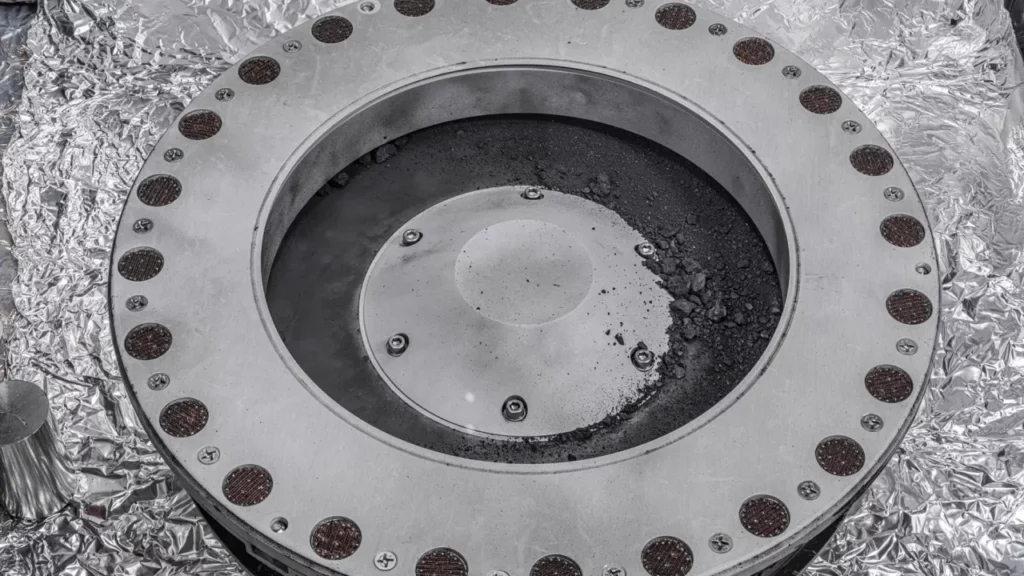NASA gave the public a first look at black rocks and dust taken back from an asteroid, and it’s impressive. While most of the material is locked in a device that has to be dismantled, the small amount analyzed so far shows that the asteroid, named Bennu, has water and carbon, suggesting asteroids could have kickstarted life on Earth.

The sample was collected from Bennu, a 4.5-billion-year-old asteroid, in October 2020 by the OSIRIS-REx mission from NASA. It arrived on Earth in a capsule on September 24, dropping from the spacecraft and landing in Utah. Since then, researchers have been working to study the material inside the top of the canister for an early analysis.
The results and the first look at the sample were unveiled during a livestream from NASA at the Johnson Space Center in Houston. The researchers used an electron microscope, taking infrared measurements, as well as X-rays to create a 3D model of one of the particles to reveal its composition. Overall, they found a “scientific treasure”.
“The OSIRIS-REx sample is the biggest carbon-rich asteroid sample ever delivered to Earth and will help scientists investigate the origins of life on our own planet for generations to come,” NASA administrator Bill Nelson said in a news release. “The sample has made it back to Earth, but there is still so much science to come.”
Looking into asteroids
The goal of the OSIRIS-REx mission was to collect 60 grams of asteroid material. Researchers at NASA spent 10 days disassembling the sample return hardware to get a glimpse at the bulk sample within. When they opened the canister, they discovered bonus material covering the outside of the collector heard, canister lid and base.
Mission team members don’t know exactly how much material was brought back home. They believe it’s 250 grams, much more than the 60 grams, but that’s an estimate, calculated by the time the capsule was in space. NASA will now distribute parts of the sample over the next months and years to researchers worldwide.
What scientists know so far is that the material is high in carbon, about 5% in weight. It also has water molecules in its crystallized structure and iron minerals in the form of iron sulfides and iron oxides. Overall, it’s a time capsule into the solar system’s origins, Dante Lauretta, OSIRIS-REx principal investigator, said in a news release.
“These discoveries, made possible through years of dedicated collaboration and cutting-edge science, propel us on a journey to understand not only our celestial neighborhood but also the potential for life’s beginnings. With each revelation from Bennu, we draw closer to unraveling the mysteries of our cosmic heritage,” he added.
Scientists first caught sight of Bennu in 1999 with a telescope in New Mexico. It’s a loose clump of rocky material and measures about 500 meters across. Scientists believe it holds clues to the origins and developments of rock planets such as Earth, which is why the next few years will be crucial to understanding the samples better.






